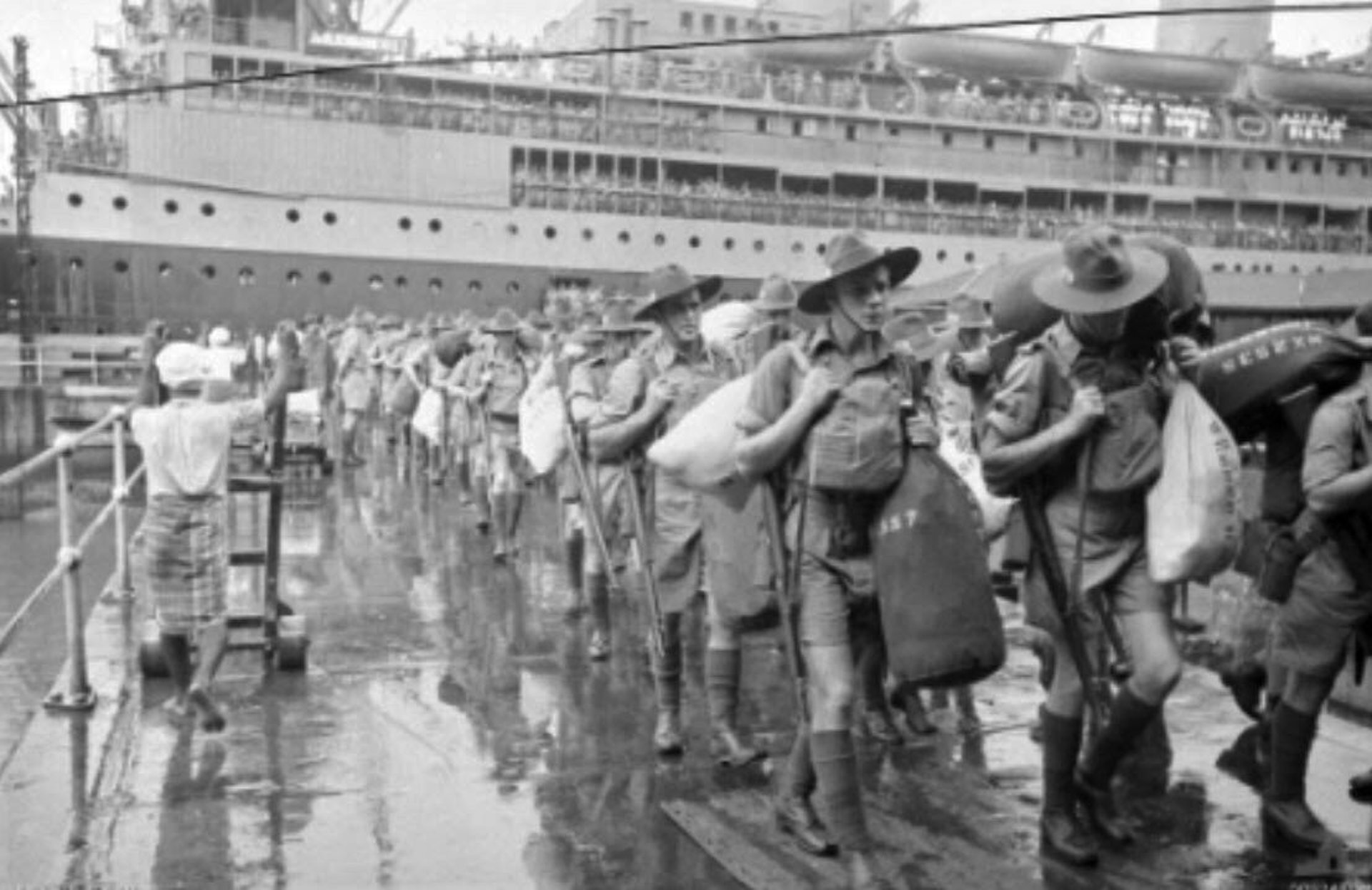
You didn’t come this far to stop
Arrival in Singapore and the New World of Malaya
Episode 18: Arrival in Singapore and the New World of Malaya
On February 18, 1941, the RMS Queen Mary arrived at the naval docks in Singapore, bringing with it the 22nd Brigade of the 8th Division AIF. The dockside was a scene of chaos and excitement, teeming with British troops, local laborers, and dignitaries gathered to welcome the Australian soldiers. Among the distinguished guests were Lieutenant General Lionel Bond, the General Officer Commanding (GOC) Malaya, and Sir Shenton Thomas, the Governor of the Straits Settlements, accompanied by his wife.
WW2 HISTORYDESCENT INTO HELLIN THEIR FOOTSTEPS BLOG
Toursofwar.com
7/31/20246 min read
The Queen Mary Docks in Singapore
A Grand Reception
The scene was far from solemn, however. According to Don Wall of the 2/20th Battalion, the troops showered the dignitaries with coins, a mischievous gesture that brought levity to the formal occasion. Reg Newton, another soldier from the 22nd Brigade, added that some of the soldiers heated pennies and tossed them down to the docks, causing chaos among the local workers and British troops as they scrambled to collect the coins. For the onlookers aboard the Queen Mary, the multitude of uniforms worn by the welcoming parties might well have come from the wardrobe of a theatrical company, adding to the surreal nature of their arrival.


Did You Know?
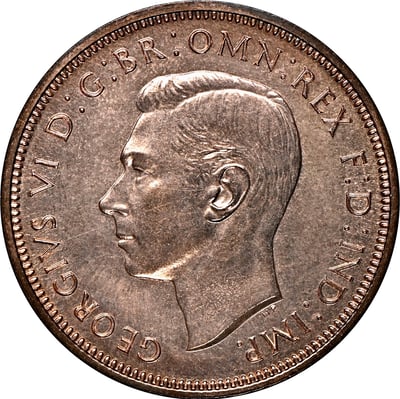

Heated Pennies Prank:
When the 22nd Brigade arrived in Singapore, some Australian soldiers played a prank by heating pennies and tossing them onto the wharf. This caused a scramble among the local workers and British troops, who unknowingly picked up the scorching coins. It was one of the many practical jokes that highlighted the Australians' irreverent sense of humor.
Once disembarked, the 22nd Brigade was swiftly packed into railway carriages and transported to the state of Negri Sembilan. The brigade was dispersed across several locations:
Brigade Headquarters and the 2/18th Battalion along with the 2/20th Battalion were stationed at Port Dickson on the west coast of Malaya, approximately 320 kilometers from Singapore.
The 2/19th Battalion was deployed to Seremban, about 32 kilometers inland from Port Dickson and roughly 360 kilometers from Singapore.
Meanwhile, the Headquarters of the 8th Division and its Signals Unit were established in Kuala Lumpur, the capital of the Federated Malay States. The artillery, general hospital, and supply units were based in Malacca, while the Motor Ambulance Convoy was stationed at Kajang, located about halfway between Seremban and Kuala Lumpur.
Port Dickson
Units: Brigade Headquarters, 2/18th Battalion, 2/20th Battalion
Distance from Singapore: 320 kilometers
Commanding Officers:
Brigade HQ: Major General Henry Gordon Bennett (overall command)
2/18th Battalion: Lieutenant Colonel Arthur Varley
2/20th Battalion: Lieutenant Colonel Alfred Jess
Size: Approx. 2,000 men (combined for 2/18th and 2/20th Battalions)

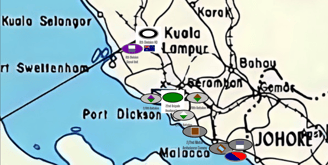
Deployment Across Malaya
Kuala Lumpur
Units: 8th Division Headquarters, Signals Unit
Distance from Singapore: Approx. 350 kilometers
Commanding Officer: Major General Henry Gordon Bennett
Size: Approx. 200 men (combined HQ and Signals Unit)
Seremban
Unit: 2/19th Battalion
Distance from Port Dickson: 32 kilometers inland
Distance from Singapore: 360 kilometers
Commanding Officer: Lieutenant Colonel Charles Anderson
Size: Approx. 1,000 men
Malacca
Units: Artillery Units, General Hospital, Supply Units
Distance from Kuala Lumpur: Approx. 120 kilometers south
Size: Approx. 1,500 men (combined for all units)
Kajang
Unit: Motor Ambulance Convoy
Distance from Seremban: Approx. 20 kilometers
Distance from Kuala Lumpur: Approx. 30 kilometers
Commanding Officer: Captain John Simpson
Size: Approx. 100 men
Strategic Positioning of the 22nd Brigade
Entering an Alien World
The Australians were stepping into a world entirely new to them. Unlike the familiar battlefields of the Middle East and Europe, Malaya presented a different challenge. The training grounds of Egypt and the Bible lands, or the fields of Flanders, were far removed from the dense jungles and tropical climate of Southeast Asia. For many soldiers, their limited education in geography and culture made this an alien world.
First Impressions
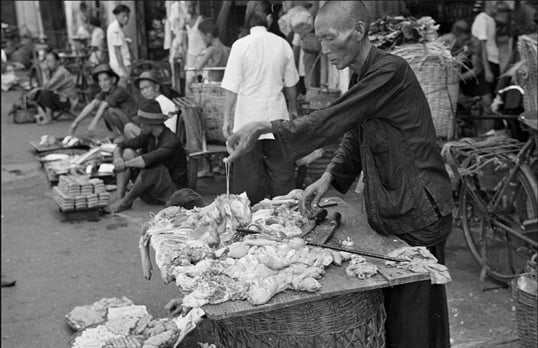

The first impressions of Singapore were overwhelming. The oppressive heat and humidity caused immediate discomfort, with soldiers drenched in sweat as they adjusted to the on-and-off rain. The sights, sounds, and smells were unlike anything they had encountered before. The vivid green of the palm trees, the striking colors of tropical gardens, and the multitude of aromas from the bustling food stalls created a sensory overload. Some of these smells were curious, while others, such as the stench of drying fish swarming with flies, were utterly repugnant.
Did You Know?
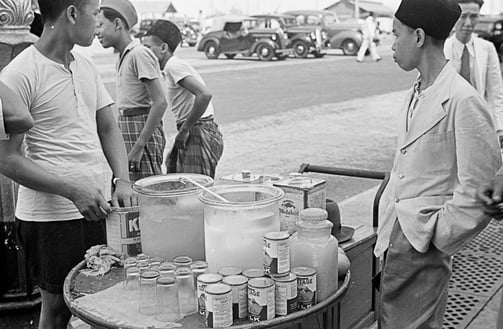

A Different World:
For many of the Australian soldiers, arriving in Singapore was their first experience of the tropics. The intense heat, humidity, and the vibrant, chaotic streets of Singapore were a stark contrast to the more familiar training grounds in Australia. This new environment required rapid adaptation, not just to the climate but also to the cultural landscape they were now part of.
Exploring Singapore’s Entertainment
Singapore’s Streets
Navigating the streets of Singapore was an adventure in itself. The crowded streets were a seething mass of hawkers, food stalls, and coolies, all moving in a seemingly dysfunctional yet somehow coordinated manner. Bicycles, rickshaws, and horn-blowing cars weaved through the chaos, making their hurried way amidst the dense crowds. Above the street-level commotion, laundry hung from bamboo poles protruding from the windows of cramped buildings, adding to the vibrant yet chaotic scene.
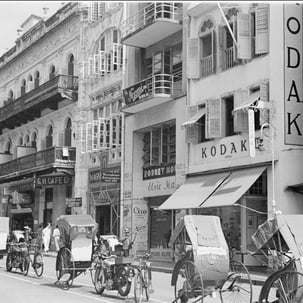
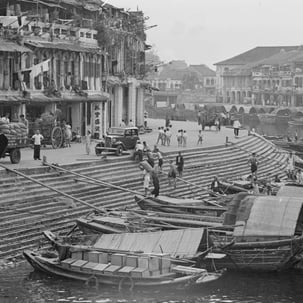
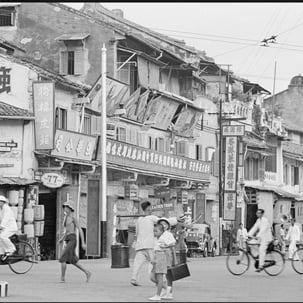
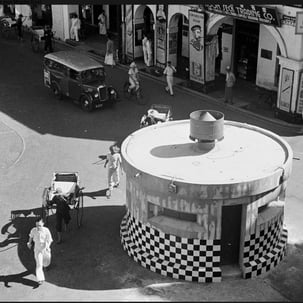
A Bustling and Chaotic Scene
Recreation and Leisure
When on leave, the Australian soldiers found solace in the vibrant nightlife of Singapore. They could visit places like the Great World, New World, or Happy World, which were the Singaporean equivalents of amusement parks like Luna Park back home. These venues offered the usual sideshows, stalls, and picture shows, but there were also attractions that catered to the soldiers' desires for relaxation and entertainment.
In these entertainment hubs, soldiers could purchase alcohol and dance with attractive local or Eurasian women for a small fee. For those seeking more intimate encounters, the lure of Lavender Street, Singapore’s extensive red-light district, offered the "horizontal refreshments" that many soldiers sought.
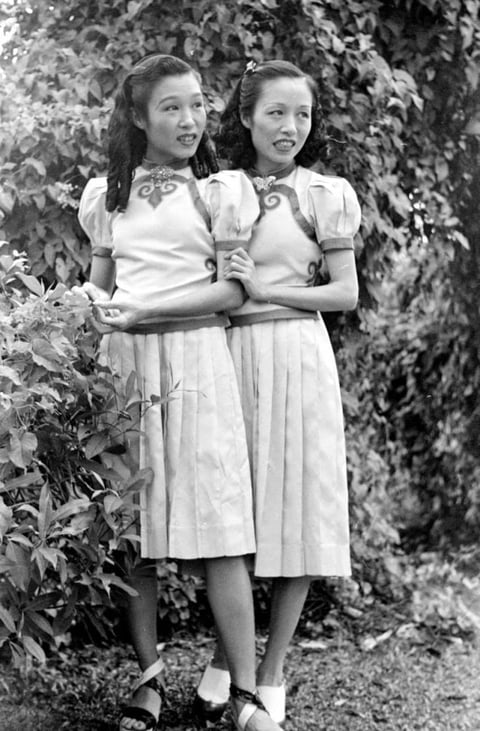

The 22nd Brigade’s Challenges
Adapting to a New Military Environment
As the ranks of the 22nd Brigade began their training and adjusted to this new military, physical, and cultural environment, they faced challenges beyond the unfamiliar terrain and climate. The undercurrents of hostility and intrigue within the 8th Division headquarters began to emerge, setting the stage for internal conflicts that would affect the brigade’s operations.
When Major General Henry Gordon Bennett arrived in Malaya, he was already a man burdened by frustrations and grievances. Having been overlooked three times for command positions he felt qualified for and entitled to, Bennett harbored bitterness towards his superiors. He was well aware of the powerful enemies he had made, particularly his arch-enemy General Sir Thomas Blamey, who was in command of the corps in the Middle East. To add to his challenges, Bennett was forced to work with two staff officers, Rock and Broadbent, and one of his brigade commanders, none of whom he had appointed. These individuals would prove to be problematic subordinates, further complicating Bennett's command.
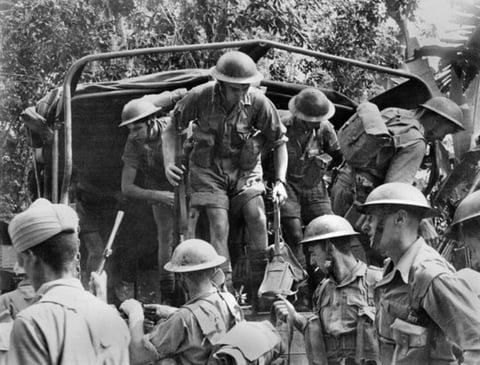

Conclusion
The Calm Before the Storm
The arrival of the 22nd Brigade in Singapore marked the beginning of a new chapter in the story of the 8th Division AIF. As the soldiers settled into their new surroundings, they were unaware of the trials that lay ahead. The challenges of adapting to an alien environment, coupled with the internal tensions within the division, set the stage for the grueling battles to come. The story of the 22nd Brigade was just beginning, and the journey from their arrival in Singapore to the battlefields of Malaya would test their resolve and strength in ways they could not have imagined.
How You Can Help
Donations and Sponsorships: We are seeking corporate sponsorships and donations to fund ongoing restoration projects and educational programs. Your support can make a significant difference in maintaining the quality and impact of the museum.
Volunteer Opportunities: If you have expertise or time to offer, consider volunteering with us. There are many ways to get involved, from artifact restoration to educational outreach.
Spreading the Word: Share this blog and our mission with your network. The more people who know about the JEATH War Museum and its significance, the greater the impact we can achieve together.
The St Andrews Research Team is dedicated to preserving the legacy of the Thai-Burma Railway and the memories of those who suffered. We need your support to continue our work. There are several ways you can help:
Join the Cause!
If you or someone you know is interested in supporting this cause, please get in touch.
This is a chance to be part of something truly meaningful and impactful.
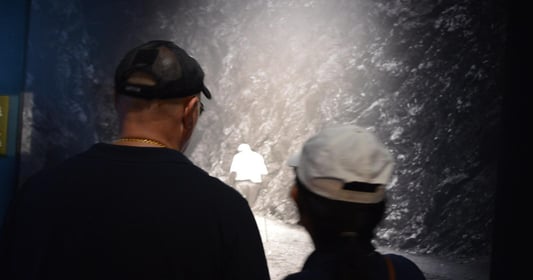

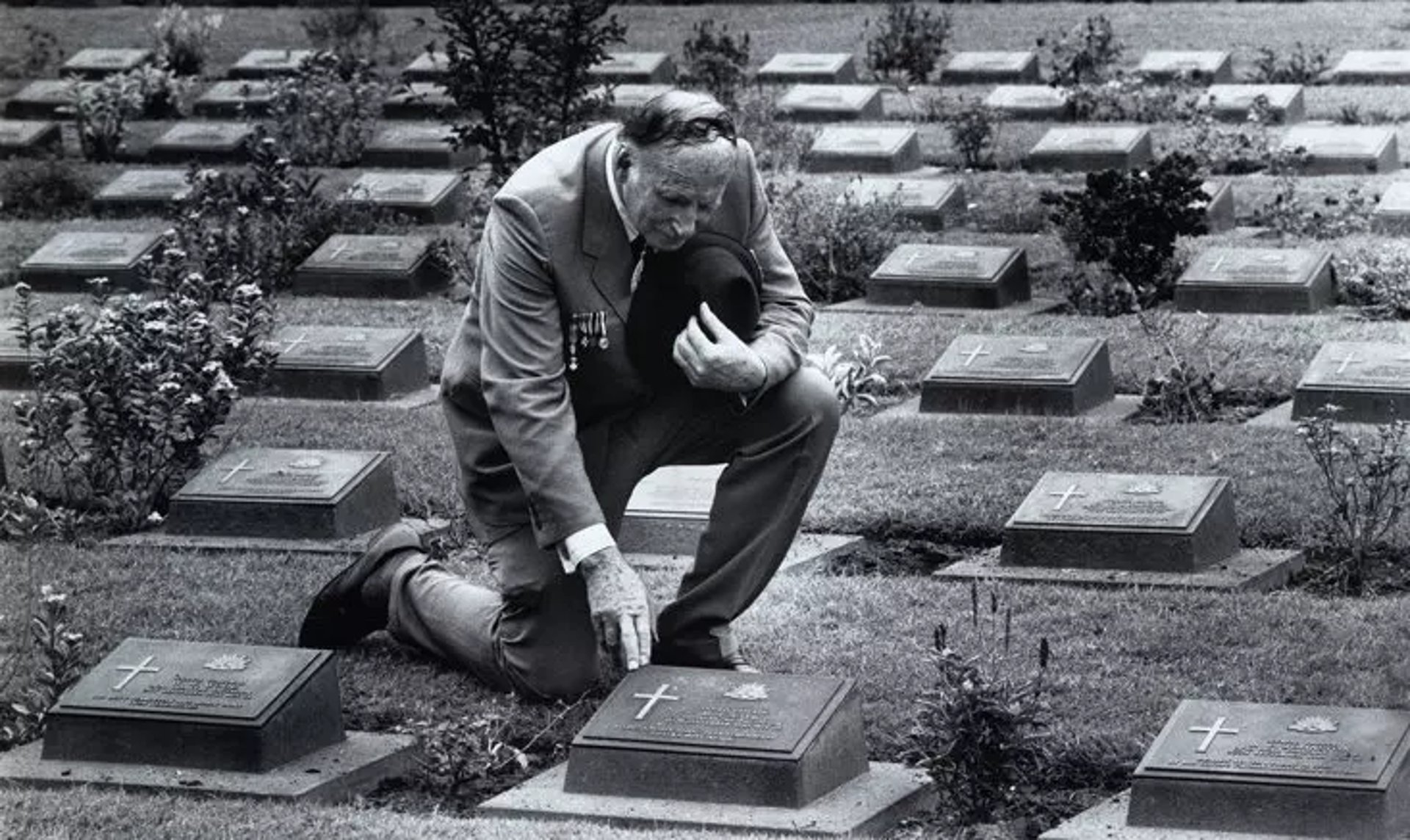
Together, We Can Make a Difference!
This is a veteran-run project, and we need your help to make it happen. Stand with us in honoring the legacy of the POWs and ensuring their stories are never forgotten.
